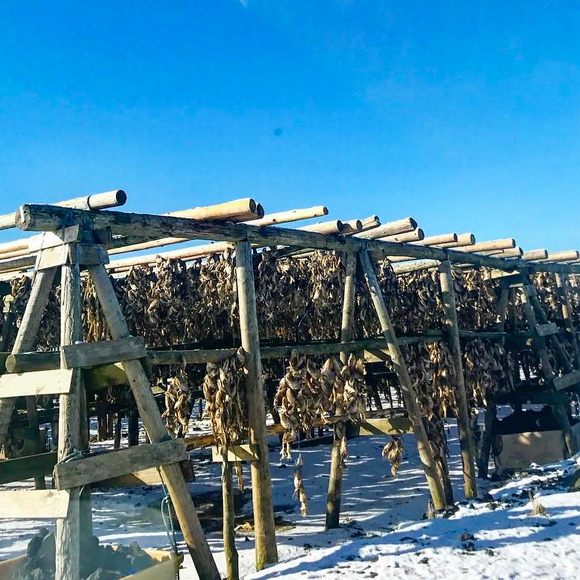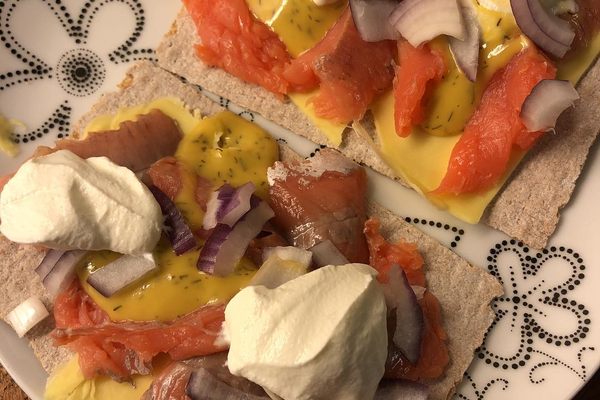Looking out across the cold, windy coast of Iceland, one might spot a scene resembling a medieval torture fest for fish. The practice of drying rows upon rows of gutted fish on scaffolds then flattening them into harðfiskur dates back millennia. But the jerky-like product remains so popular that it’s also likely to tempt you from the checkout line at most grocery stores across Iceland.
Traditionally made, harðfiskur begins by hanging cod, haddock, or wolffish (ocean catfish) off cliffs or along rows of wooden-beamed structures. The wind keeps flies from collecting while drying the meat into flaky boards of fish flesh. The dry meat gets pounded until it is thin, flat, and somewhat supple.
Locals slather harðfiskur with Icelandic butter, then “work on” the chewy, salty strips. Despite its pungent ammonia-like aroma, kids and adults find them so gnaw-worthy that modern industries have emerged that dry the fish in controlled temperatures and pass the pieces through special flattening machines before packaging them for sale.
A caution to the tender-toothed, mashed via mallet or machine, the chewy treat can still be very tough. Archaeological records show notable dental damage from the abrasive dried fish combined with soured butter. As it turns out, medieval harðfiskur may have been torturous after all.
Written By
 christinehelenrose
christinehelenrose
Sources
- icelandicfoodstories.wordpress.com/2010/09/05/har%C3%B0fiskur-me%C3%B0-smjori-dried-fish-with-butter/
- grapevine.is/culture/food/2016/06/30/food-of-the-week-hardfiskur/
- etd.ohiolink.edu/rws_etd/document/get/kent1374943947/inline
- thefourthcontinent.com/2013/07/16/dry-fish-iceland/
- icecook.blogspot.com/2006/01/harfiskur-icelandic-hard-dried-fish_18.html
- worldoffoodanddrink.worldtravelguide.net/food/reykjavik-food-drink-guide-10-things-try-reykjavik-iceland/
- doi.org/10.1016/j.archoralbio.2013.06.019
- www.ncbi.nlm.nih.gov/pmc/articles/PMC5806945/



















